
views
X
Expert Source
Iddo DeVries, MA-SLPSpeech-Language Pathologist
Expert Interview. 28 August 2020.
If you've noticed that you or a child you know has difficulty with social situations, paying attention to the person's overall behavior can help you discern one condition from the other and seek an accurate diagnosis.
Analyzing Communication

Understand how the conditions can look alike. Autism and selective mutism can both share traits like... Introversion Limited speech Avoidance of eye contact Not responding to others addressing them Difficulty using nonverbal communication Difficulty expressing emotions or thoughts "Clinging to" or following certain people Difficulty forming friendships Social anxiety
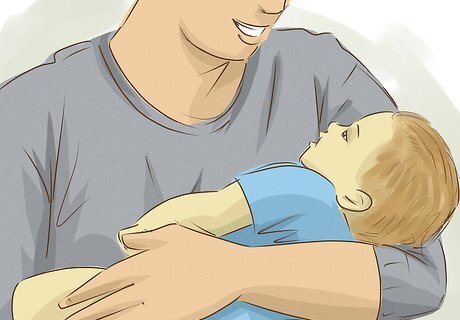
Consider when the person reached social milestones in infancy. As they grow, babies and toddlers are expected to meet certain social milestones at a certain pace - such as eye contact, smiling, babbling, and speaking. While a person with selective mutism will reach these milestones at the expected pace, an autistic person may have hit them early, late, or not at all. Take time to think - when did the child begin smiling? Waving? Making sounds? Responding to their name? How did they respond to being comforted? Did they ever seem to lose skills or regress? Not all autistic people experience speech delays. Some learn to speak on time, or even start speaking early.Did You Know? While some children with selective mutism experience speech delays, they're not connected. Only about 20% of children with selective mutism have speech delays or disorders.
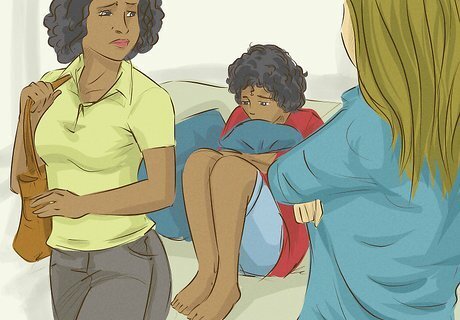
See how consistent the behavior is. A person with selective mutism can speak relatively normally, as long as they're around people they trust. However, they will become unable to speak around other people and feel quite anxious around them. Autistic people will typically display the same speech patterns around everyone, so they may not talk to anyone, or speak only minimally. Autistic people can temporarily lose the ability to speak under stress, even if the person can typically speak normally. However, they'll be able to use this skill again when the stressor is gone. Someone with selective mutism can be extremely talkative around their "safe" people, and may be described as chatterboxes. Some people with selective mutism can talk normally with a few people outside of their family, such as their peers. However, outside of this "safe group", the person will be unable to speak.
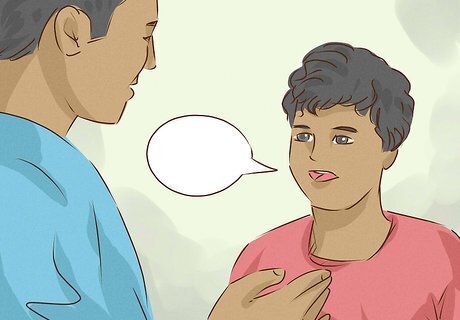
Listen to the person's voice. An autistic person may have an unusual voice, or speak oddly in comparison to their peers; they may sound monotonous or singsong, speak at the "wrong" volume, speed, or pitch, reverse pronouns, or sound as though they're reading off a script. A person with selective mutism will usually not have these quirks. Some people with selective mutism might be able to whisper to others, or make brief noises in a voice that "isn't theirs". Autistic people might not be able to give "correct" responses, and might say things that don't match the context of the conversation (like saying "The puppy went outside" when there was no dog in the room). Someone with selective mutism may have a speech or language disorder, such as stuttering. (However, speech disorders are not part and parcel of selective mutism.)

Consider what the person talks about. When the person does speak, consider their conversational topics. Those with selective mutism tend to converse about multiple things and have developmentally appropriate interests, whereas an autistic person may focus only on one topic and have trouble discussing something else. An autistic person may "ramble" about certain topics, including some that most people their age wouldn't be interested in (e.g. a young child "infodumping" about chromosomal deletion). They may recite a long list of information or give endless trivia about it, and not realize when the listener isn't interested or is getting bored. Even though they may be quite talkative when comfortable, a person with selective mutism will typically understand that conversations are give-and-take. An autistic person might dominate the conversation without realizing the listener wants to talk, or struggle to carry on a conversation.

Analyze how the person learns social skills. Someone with selective mutism often develops social skills at a similar pace to neurotypical people. It's more intuitive to them, and they usually don't need to be taught unspoken social rules (e.g. giving people personal space). Autistic people are more likely to have trouble with these skills, and may need to be taught explicitly. Social rules such as turn-taking, manners, and "white lies" can be confusing to an autistic person, especially if the rules seem arbitrary or aren't always applied. Did You Know? Autistic girls are more likely to mask their social difficulties and mimic the behavior of their peers.

Note whether the person expresses interest in their peers. An autistic person may seem to not be interested in their peers, or prefer to spend time with people of a different age from them. A person with selective mutism wants to interact with others, but their anxiety prevents them from speaking or joining group activities. Autistic children may prefer solitary or parallel play; playing with other children might be confusing or overwhelming to them. A child with selective mutism might opt for solitary play, but this is because they can't speak to their peers, not because they're confused by them. Autistic people may prefer to talk to people who are older or younger than them - for example, a child talking to an adult, or a teenager spending time with younger kids. To them, it's not as difficult as talking to their peers. A person with selective mutism will only talk to their "safe" people, because it's too difficult to talk to anyone else. Both autistic people and people with selective mutism usually want some friends. Autistic people may have difficulty with knowing how to make friends; someone with selective mutism struggles to overcome their anxiety about doing so. Did You Know? Both autistic people and people with selective mutism might have a "safe person" that they stay with. This person might help them feel calm and/or help them communicate.

Note whether the person understands nonverbal signals. A person with selective mutism tends to understand nonverbal communication, such as body language, facial expressions, and tone of voice. An autistic person will notice these things, but may not understand what they mean. An autistic person might have difficulty trying to figure out what someone is feeling or what they're going to do next, and may get confused or upset if someone doesn't share the same thoughts or opinions as them. Autistic people may struggle with discerning sarcasm and figurative language, and frequently take things literally. For example, they may be confused by phrases like "What's up?" or "Cat got your tongue?". This is not a problem for someone with selective mutism. Children with selective mutism will usually respond to their name being called and will look in the right direction if someone points to something. Autistic children may not respond to their name or look to see what someone is pointing at.
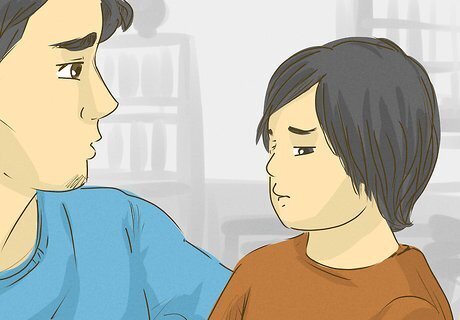
Look for use of nonverbal communication. An autistic person may not use nonverbal signals or use them unusually. A person with selective mutism knows how to communicate using nonverbal signals, and may do things like nod, point to objects or people, or read and communicate using body language. Autistic people may avoid eye contact because it's painful to them, or make too much eye contact and "stare people down". Their facial expressions or tone of voice might not match what they're thinking or feeling. Someone with selective mutism might seem rigid or have "jerky" movements or facial expressions. They may appear to be tense or anxious. In some cases, selective mutism can cause a person to freeze up; they might not be able to use body language or make eye contact, but they can still understand it. An autistic person may use some forms of nonverbal communication to communicate what they want or need, like pointing to something.

Consider the person's speech processing skills. Someone with selective mutism can typically understand and process speech at a developmentally appropriate level. An autistic person may struggle to process or understand speech; they may have delayed reactions to speech, not respond to someone speaking to them, or need extra time to form a response. An autistic person might struggle with auditory processing disorder, and might need to muffle or "mute" other sounds (like turning off the ceiling fan or moving to a quieter room) to focus on and process what somebody is saying to them.

Consider repetition of words or phrases (echolalia). An autistic person may use echolalia as a way of communicating, stimming, or calming down; contrastingly, a person with selective mutism is unlikely to use echolalia. Echolalia can include: Repeating what was just said to them Repeating a phrase they heard when they felt a certain emotion (e.g. saying "happy birthday" when they're excited) Repeating instructions while they do something Quoting lines from something (e.g. a book or movie) at random
Looking at Other Behaviors

Note an unusual developmental timeline. Autistic people tend to reach developmental milestones and learn skills at a lopsided or out-of-order pace. Someone with selective mutism will typically reach milestones at the expected pace. An autistic person may reach milestones earlier or later than expected. Some will follow the typical developmental timeline, and be diagnosed at an older age. Consider both typical developmental milestones (vocalizing/speaking, walking, potty-training) and skill development (learning to read, tying shoes, independent self-care, driving a car). Selective mutism can make it difficult for someone to reach later-in-life milestones - like going to college, getting a job or earning their driver's license - because of the socializing required for these. Autistic people may develop anxiety about reaching later-in-life milestones, because the independence required can be difficult for them. They may try to overcompensate in areas they're good at, or attempt to "make up for" things they can't yet do.
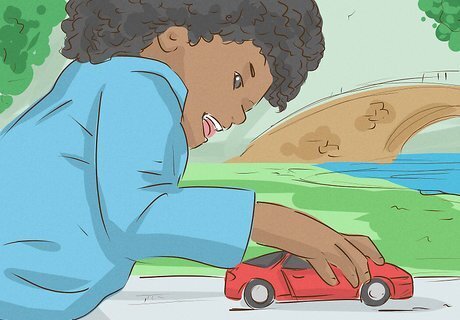
Watch to see if a child uses imaginative play. Autistic children, when playing, may not seem to engage in imaginative play; they may stack or line up their dolls rather than making them interact, or seem more focused on spinning the wheels on a toy car rather than making it go somewhere. Children with selective mutism are more likely to engage in imaginative play. This doesn't mean that autistic children have no imagination. They often imagine things and just don't act them out. Some autistic children might recite and act out scenes from books, movies, and plays they're familiar with. It may look to be imaginary play at first glance, but they typically follow the original material closely. Autistic children might be able to engage in more obvious imaginative play, like roleplaying, if another child takes the lead.
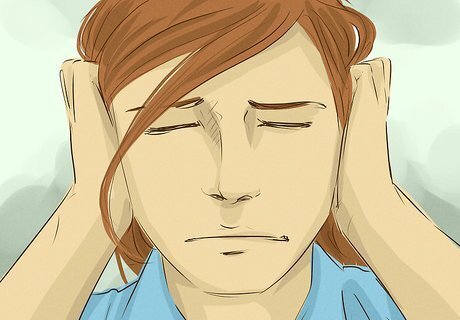
Analyze differences in sensory processing. While both autistic people and people with selective mutism can have unusual responses to sensory feedback, it's more common for autistic people to have sensory processing issues. They might be extremely sensitive (hypersensitive), not sensitive enough (hyposensitive), or experience both hyper- and hyposensitivity. Sensory processing issues can affect all five senses, and may also affect someone's ability to recognize or feel things like hunger, pain, or the need to use the bathroom.

Look for a preference for sameness. Autistic people often prefer to stick to routines and do things the same way repeatedly. If their routine is interrupted or changed, they may be deeply upset by it, even if the change is slight. This is not present in selective mutism. This can also apply to things unrelated to routine; for example, an autistic person might get upset if somebody moves their things around on their desk or in their room. Autistic people may dislike or resist most change, even if the change would have little effect or would be temporary (e.g. not wanting to go out for dinner even if they like food at the restaurant, because they usually eat at home).

Observe passionate special interests. Many autistic people have interests that they fixate on and are very knowledgeable about. Special interests can be about anything, ranging from very broad topics (e.g. animals) to very niche topics (e.g. a specific band). While someone with selective mutism might have passions, they're closer to neurotypical people's hobbies or passions, and not quite as intense or focused as special interests. Autistic people can (and often will) recite lots of information about their special interest(s) at will, which is called infodumping.

Watch for stimming. Stimming (often called "stereotyped or repetitive movements" on diagnostic criteria) is any type of behavior done to stimulate the senses. Stimming is very common in autistic people and often serves to self-regulate or help with concentration. If someone is stimming, they might be: Flapping or waving their hands or arms Flicking their fingers Rocking back and forth Spinning around in circles Watching things move around (e.g. staring at the ceiling fan) Touching or feeling textured things Vocalizing in some manner (e.g. humming, making sounds, shrieking, echolalia) Smelling things Playing with something (e.g. a fidget toy or their hair) Some people stim in harmful manners; for example, they might scratch themselves, pull their hair, hit their head, or break things. These stims can be replaced by alternatives so as not to cause harm.Tip: Those with selective mutism might do some of these out of anxiety. Consider whether the person does these things only when anxious, or if they do them when feeling neutral or happy.

Look at executive functioning skills. Executive function is the ability to organize, map out, and complete tasks. While those with selective mutism tend to have typical executive functioning skills, autistic people may struggle with these. Signs of executive dysfunction include: Fixating or perseverating on activities Trouble moving from one activity to another Difficulty starting or following through on tasks Needing prompting to work on something Trouble controlling emotional reactions Messiness; difficulty keeping organized (may lose things often as a result) Poor impulse controlDid You Know? Autistic people may run out of energy to do things; for example, if they overwork themselves on a project, they may have difficulty finding the energy to go to the store later.

Be alert for struggles with motor control. People with selective mutism typically have average motor skills (though they may seem clumsy when in a social situation). However, it's common for autistic people to struggle with motor control in some way, and move clumsily or awkwardly. They often know how they need to move, but their body doesn't cooperate. Struggles with motor control can look like... Poor coordination (may constantly lose their balance, run into things, drop things, or "trip on their own feet") Trouble writing or typing Difficulty getting dressed independently, and/or difficulty with zippers, buttons, and tying shoes Trouble speaking clearly; may have an unusual voice Difficulty controlling their movement (e.g. pointing to the wrong thing)

Consider meltdowns and shutdowns. When overwhelmed by something (such as sensory input, a change in routine, or simply overpowering emotions), an autistic person may experience a meltdown or shutdown. How long it lasts is dependent on the situation, but the only treatment for a meltdown or shutdown is a quiet place to rest. Meltdowns and shutdowns do not occur in selective mutism. Meltdowns can involve screaming, crying, falling on the floor, and in some cases, self-injury. (If the person learned to behave aggressively, they may do things like hit, kick, or bite objects or people, but most autistic people are not violent.) They may look like temper tantrums on the surface, but unlike tantrums, meltdowns cannot be stopped. Shutdowns are essentially a meltdown turned inward. The person may struggle to speak or stop speaking, temporarily lose skills, and feel exhausted by things they would normally be able to tolerate. They're often "running on fumes", and in severe cases, may struggle to care for themselves during a shutdown. Children with selective mutism may throw tantrums in an attempt to avoid social situations, but these tantrums are under the child's control and are limited to children. Meltdowns and shutdowns are not controllable and can occur at any age.
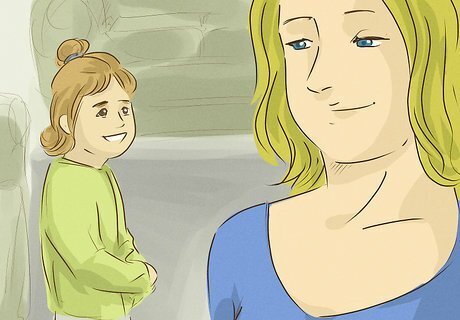
Take note of the age of onset. Autism is lifelong and develops in utero, though it's frequently recognized in early childhood or later. Selective mutism frequently develops during early childhood, often between two and four years old, though it may go undiagnosed until the child enters school. Selective mutism can't be outgrown, but it can be overcome with treatment during both childhood and adulthood. Autism is permanent and will not go away, though an autistic person can learn alternative ways to communicate and manage their environment.
Seeking Diagnosis

Research autism and selective mutism. While diagnostic criteria is a good place to start, it doesn't always explain how the conditions look in real life. Take time to research and read up on both autism and selective mutism; wikiHow's autism articles are a good place to start if you suspect autism. Read from a variety of autistic people and people who have or had selective mutism. Autism is a broad spectrum (and can go overlooked in girls and people of color), and selective mutism looks different in everyone. You or your child might relate better to one person than to another. Try posting a description of your or your child's behaviors on #AskAnAutistic or #AskingAutistics. While they can't provide an official diagnosis, autistic people can often discern whether another person is autistic, or if they might have something else. (You can use a fake name if you're worried about privacy.) Avoid fearmongering organizations such as Autism Speaks. Neither autism nor selective mutism are life-ruining, and "not speaking" doesn't mean "not intelligent".

Look into similar conditions. If neither selective mutism nor autism seems like it quite fits, there might be another condition that better explains what's going on with you or your child. Don't be afraid to research other conditions and seek professional advice. Some conditions that look similar include: Social anxiety Nonverbal learning disability Reactive attachment disorder (if the child was neglected in infancy) Post-traumatic stress disorder (if trauma occurred) Social communication disorder Deafness or hearing loss Limited knowledge of the language (if the person is multilingual) Shyness (if the person starts speaking once they're comfortable)

Note that the conditions cannot be diagnosed together. Under DSM-V and ICD-10 criteria, selective mutism and autism aren't considered comorbid conditions, and someone can't be diagnosed with both. However, some autistic people do report experiencing selective mutism as well. It may be possible for the person to have both, but the two cannot be diagnosed together.

Talk to people involved in the child's life. If you suspect a child you know might be autistic or have selective mutism, get in touch with others who interact with them regularly (such as their teacher, babysitter, or parents). Ask how the child behaves in other environments, like in school, and don't be afraid to share your concerns. For example, you might ask your child's teacher, "How is Diana getting along with her classmates?" Pay attention to comments about social interaction (e.g. "He's a very intelligent child, but he doesn't participate in group discussions; does he speak up at home?" or "They don't seem to spend time with their peers. Do they spend time with peers at school?").

See a doctor for diagnosis. While research can help you get a grasp on what's happening with you or your child, only a professional can diagnose autism or selective mutism. Write down what you or your child experience and make an appointment with your doctor; they should be able to refer you to someone who can help with diagnosis. Tip: If you or your child have trouble using speech, try bringing a form of AAC with you to help with communication. For example, you or your child may be able to write or type instead of speak.


















Comments
0 comment